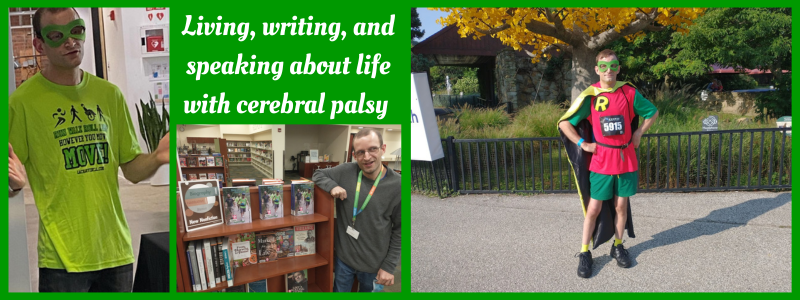*Spoiler Alert- The following contains spoilers from the Girl Meets World episode “Girl Meets I Am Farkle,” which aired Friday, September 11th, 2015.
**This post also contains Amazon affiliate links. As an Amazon affiliate I earn a commission on qualifying purchases.
Friday, September 11th, 2015 Boy Meets World spinoff Girl Meets World tackled a subject not addressed nearly enough on the small screen, disability. Specifically, the episode “Girl Meets I Am Farkle” focused around series regular the eccentric Farkle Minkus (Corey Fogelmanis) possibly landing on the autism spectrum. The development leaves Farkle, his friends, and his family experiencing complicated emotions.
Facing A Diagnosis
Farkle seems willing to accept the diagnosis but seeks comfort from his friends. Those friends especially Cory Matthews’ (Ben Savage) daughter Riley (Rowan Blanchard) and “her Shawn” Maya (Sabrina Carpenter) respond defensively. They attempt explaining away Farkle’s behavioral quirks as him simply being “Farkley.”
Then there comes Farkle’s parents, Boy Meets World blasts from the past Stuart Minkus (Lee Norris) and Jennifer Bassett (Kristanna Loken). They turn to Cory and Topanga (Danielle Fishel) for support, feeling no control over the situation. So yes, “Girl Meets I Am Farkle” covers the emotional side to a diagnosis thoroughly.
Dealing with Labels
At this point in today’s post I must admit I’m trying hard to avoid blurring lines between autism and my experiences with cerebral palsy (CP). The temptation to use the overarching label “disability” remains strong. However, I’m afraid by doing that I’m committing a disservice to both the cerebral palsy and autism communities. After all, the conditions prove very different.
Still there exist some similarities. Mainly in regards to how you react to a diagnosis, essentially a label. During the episode Cory guides his students on how to handle labels saying “Don’t live under a label. It just gets in the way of who you are.”

How come Mr. Feeney, Mr. Turner, or even forgotten media arts teacher Mr. Williams couldn’t say this to Cory and Shawn in the 90s?! Growing up I too frequently let my cerebral palsy label get in the way. Rather than living the best life I could I attempted to hide my CP, desperate to blend in and feel normal.
The Urge for Normalcy
With that said you can correctly guess I connected to the final scene in “Girl Meets I Am Farkle.” Farkle ends up not on the autism spectrum. Yet his tentative love interest Isadora Smackle (Cecilia Balagot) does. While hanging out Riley asks “Who here is normal?” Nobody raises their hands. Riley then asks “Who wants to be?” Smackle raises her hand. When she sees Farkle and friends kept their hands down, Smackle slowly lowers hers.
This powerful scene supports a notion I previously put forth in a piece for Think Inclusive, “A Proposal to Revolutionize Inclusion.” Without a Boy Meets World episode to teach me how to treat labels, I wound up learning the hard way, through personal experiences. 18 years’ worth!
The Truth About Normal
One lesson I learned exposed normal as how I now see the concept, a myth! Disability or no disability we all possess something different about us. “Girl Meets I Am Farkle” actually hits upon said crucial point via Farkle’s mother. Jennifer Bassett’s tall stature made her different but she never let what others said bother her.
To connect back to my previously mentioned proposal to revolutionize inclusion, I call on educators to create a classroom environment where differences get celebrated. Educators could use “Girl Meets I Am Farkle” to complete this task.
Develop discussion questions based off the episode. Next show the episode to your class. Afterwards use the discussion questions to cultivate a classroom conversation. Besides questions which will get your students to reflect on the characters and their situations, get personal! Ask each student to name something that makes him or her different and explain how the difference can serve as a positive.
Purposeful Dialogue
Starting a conversation can initiate a domino effect which leads to acceptance. Hence the importance to television shows incorporating storylines like Girl Meets World did with “Girl Meets I Am Farkle.” Once the dialogue begins curiosity can give way to more research, such as visiting various websites and reading memoirs by individuals with disabilities. Anyone interested in learning more about Asperger’s, the autism spotlighted in “Girl Meets I Am Farkle,” I would recommend reading Twirling Naked in the Streets and No One Noticed by Jeannie Davide-Rivera.
Finally I’m going to indulge in self-promotion and suggest you checkout my cerebral palsy memoir Off Balanced. I believe you will find Off Balanced (Buy Now) supplies a real life account to support Cory Matthews’ teachings from “Girl Meets I Am Farkle.”



